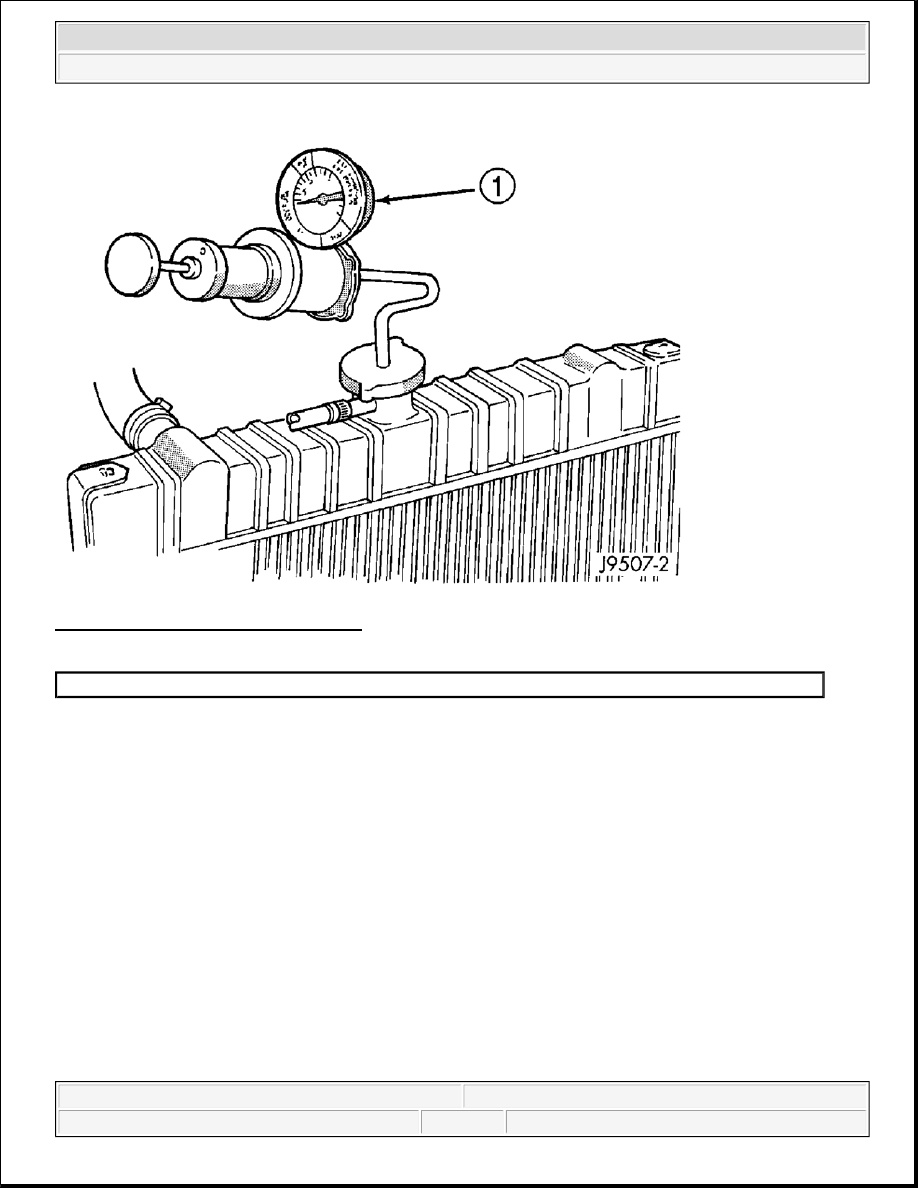Dodge Nitro. Manual - part 506

Fig. 3: Pressure Testing Cooling System
Courtesy of CHRYSLER LLC
The engine should be at normal operating temperature. Recheck the system cold if cause of coolant loss is not
located during the warm engine examination.
Carefully remove radiator pressure cap from pressure bottle and check coolant level. Push down on cap to
disengage it from stop tabs. Wipe inside of filler neck and examine lower inside sealing seat for nicks, cracks,
paint, and dirt. Inspect radiator-to- reserve/overflow tank hose for internal obstructions. Insert a wire through
the hose to be sure it is not obstructed.
Inspect cams on outside of filler neck. If cams are damaged, seating of pressure cap valve and tester seal will be
affected.
Attach pressure tester (7700 or an equivalent) to radiator filler neck.
Operate tester pump (1) to apply 110 kPa (16 psi) pressure to system. If hoses enlarge excessively or bulges
1 - TYPICAL COOLING SYSTEM PRESSURE TESTER
WARNING:
Hot, pressurized coolant can cause injury by scalding.
2007 Dodge Nitro R/T
2007 ENGINE Cooling - Nitro